If you’ve been working on your physique for a while or ever been caught up in the endless chase for awesome abs, you might be wondering…
Why do some people have more ab muscles than others?
In other words, what determines who has a 4 pack vs a 6 pack vs an 8 pack?
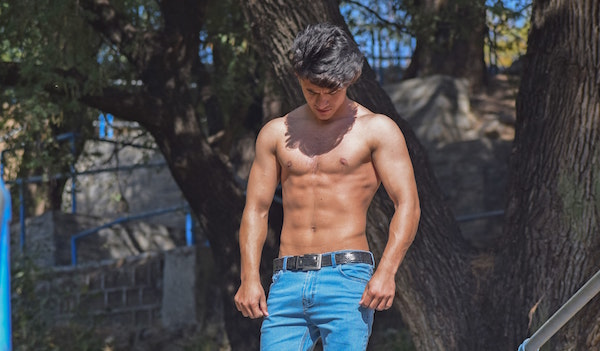
I have good and bad news.
The bad news is that the number of ab muscles you have (4 vs 6 vs 8) is completely genetic. Simply put, some people are more or less born with 4 separate main sections of abdominal muscle, others with 6, and still others with 8.
The good news is that yes, 8-packs are real, though somewhat rare. Some people can even achieve a 10 pack!
If you don’t have the genetics for an 8 pack, no amount of diet or training will ever get you one. Sorry!
But the good news is that with solid training and diet, and a lot of consistency, you can still get an awesome, lean, and toned midsection no matter what your ab genetics are.
Four pack abs example
First, let me show you what I’m talking about.
Behold, the dude below:

This guy is a pretty good example of what 4 pack abs look like.
(This is just a simple stock photo that I was able to find to illustrate the point.)
Notice how, if you study his midsection, you can see four clearly defined, individual ab muscles. Two on each side, one on top of the other.
Now it’s possible that his lower abs just aren’t well developed, or he’s not lean enough to see them yet.
But it definitely looks like he’s pretty lean overall, as the four main ab muscles are pretty visible. It sure doesn’t seem to me that there are any muscles right above his belly button just waiting to pop out.
So for someone like this, no amount of extra lower ab work or extra fat loss is going to produce more ab muscles.
They simply don’t exist! Again, it’s genetics.
Six pack abs example
Now let’s see what 6 pack abs look like:
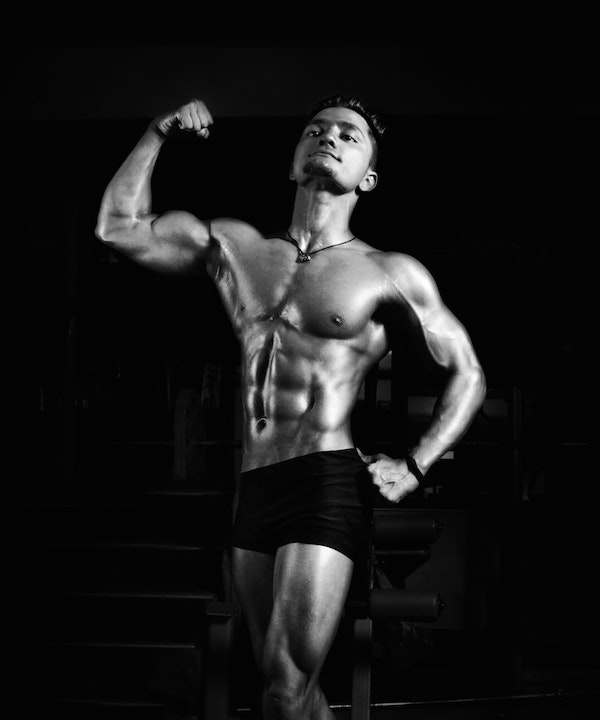
Pretty clear difference, right?
Right off the bat, it’s worth noting that this guy is more muscular and has a much more developed physique than the previous guy.
Having a 6 pack vs a 4 pack is not inherently better!
But you can definitely see the contrast. In this example, the six individual abdominal muscles in this guy’s midsection are clear as day.
You can also see his obliques, or side ab muscles, really well. But that’s a different story.
Whereas the previous guy’s ab muscles ended well above his belly button, this dude has an extra row of 2 muscles that fall right in line with his belly button.
Eight pack abs example
OK, OK. Now let’s check out a photo of what an 8 pack looks like:
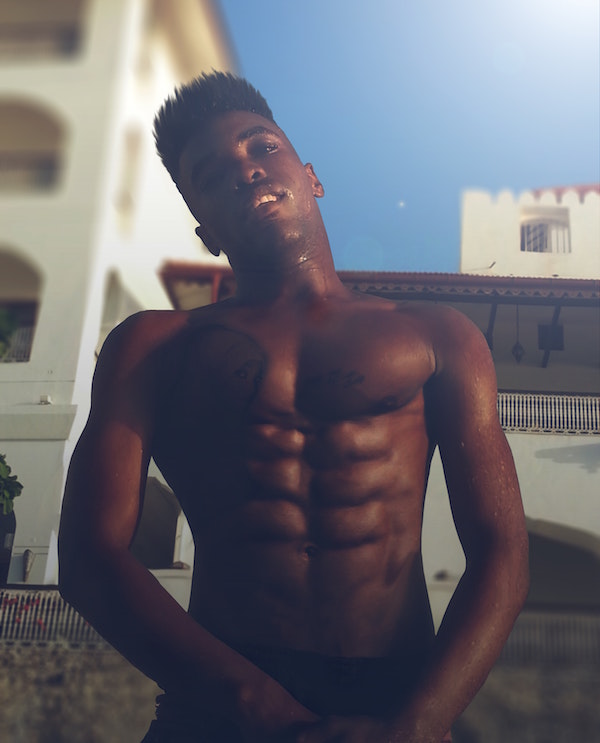
Are 8 packs real? You bet they are.
Bam! The Holy Grail of abs!
You don’t have to have a PhD in mathematics to be able to count the eight separate ab muscles visible in this photo.
When you really study 6 pack vs 8 pack abs, the difference is kind of subtle.
It really comes down to that lowest row of abdominal muscles right below the belly button. Some people (8 pack people) will have a really pronounced muscle ridge outlining the muscle there, and others won’t.
You’re going to have to be really lean and have really solid core development to see all of these ridges this clearly, but for people without the proper genetics, you’ll never be able to get that final, lowest ridge showing off the final piece of your 8 pack.
Now personally, I think the 8 pack look is a little intense, and I really prefer the aesthetics of a nicely developed 4 or 6 pack.
But everyone is different and a lot of people seem to want to strive for the coveted eight pack.
What determines a 4 vs 6 vs 8 pack? (Or ‘Why do I only have a 4 pack!?’)
As I wrote in the introduction, your potential for various different kinds of abs is entirely genetic.
As is how many abs you can have.
You’ll need to do the right things in the gym and kitchen to ultimately see them, but the sheer presence and number of muscles underneath your belly fat is completely out of your hands.
But let’s take a slightly closer look.
The “front abs” muscles that we talk about when we talk about 6 packs are called the “rectus abdominis.”
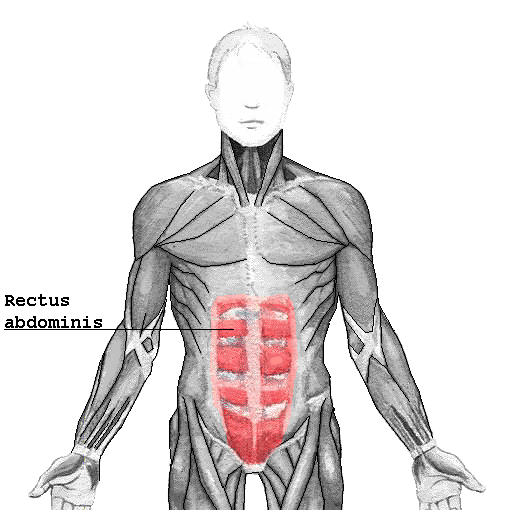
The rectus abdomis is actually just a pair of two muscles that run parallel on either sides of the abdomen.
The “ab muscles” we refer to are just ridges of connective tissue that run across these muscles.
Different people can have anywhere from 2 to 12 distinct “sections” or abs, though 6 is the most common by a wide margin.
And speaking of common…
How rare is an 8 pack and how many people have 8 packs?
According to various studies, including autopsies done on cadavers, scientists have been able to determine roughly how common different ab formations are.
8 packs are somewhat uncommon, but not rare. Around 20% of people are capable of having a 8 pack abs based on genetic muscle distribution alone.
(That’s a very rough number.)
Something like 60% of people have 6 pack potential.
And about 15% are destined for 4 pack land.
If you’re bummed that you can’t get an 8 pack, it could always be worse:
About 2% of people can only get a 2 pack!
Can you have more than an 8 pack, like a 10 pack? Are 10 packs real?
Yes!
Autopsies have shown that people can have up to 12 distinct ridges of connective tissue in their abdominal muscles… So a 10 pack is very possible!
As far as I know, there aren’t a lot of great concrete numbers on this, but 10 packs are quite rare.
They’re likely as uncommon or even moreso than 2 packs (roughly 2-3% of people).
I haven’t been able to find a good photo of a 10 pack that I can use here. But do a quick Google search for “10 pack abs” and you’ll see a ton of photos of what they look like.
It’s also worth noting here that some small amount of people can only ever have a 2-pack. 2 pack abs are not common, present in roughly 2% of the population according to some estimates.
What do 2 pack abs look like? Typically, you’ll see the demarcations at the top of the abdomen, right below the ribs. Provided you’re lean enough, the rest of your stomach will be flat and taut but will lack the definition present in a 4 or 6 pack.
Can women have 6, 8, or 10 pack abs?
Definitely.
Women have the same basic muscular system as men, so there’s really no reason why they’d be an exception.
Remember, whatever “pack” you have is simply determined by how long your rectus abdominis muscles are and how many connective tissue ridges you have crossing horizontally.
People of any sex can have anywhere from 2-12 distinct ab muscles.
Just like men, six packs are the most common ab structure for women, followed by four packs and eight packs. Both of which are totally possible!
How can you get better or more visible abs?
OK, so this is what it all boils down to.
Unfortunately, you can’t change the basic formation of your musculature.
If you were born with only six distinct areas of separate ab muscle in your rectus abdominis, you can’t change it.
No amount of:
- Low carb dieting
- Sit ups
- Crunches
- Planks
- Keto
- Or squats and deadlifts
Will ever, ever transform your 6 pack into an 8 pack!
But you can make the most of what you’ve got. Here are three pretty simply ways to get more juice out of whatever pack you’re working with:
Get leaner
The best and quickest way to get your muscles to pop out more is to lose bodyfat.
This is particularly true of ab muscles, as our bodies love to store extra fat around our midsection. You have to get pretty lean to be able to really see good definition in this area.
Cutting or shedding bodyfat isn’t easy, but it’s not complicated.
Simply eat at a small calorie deficit (try bodyweight in pounds x 12 calories per day) and get lots of protein.
You’ll start to see your ab muscles in the 10-12% bodyfat range for men, and a bit higher bodyfat percentage for women.
But if you want them to really pop for that lean, shredded look, you’ll need to get even leaner than that.
Build up your ab muscles
If you’re lean but you can’t see your abs very well, they may just not be all that well developed.
Considering entering a lean bulking phase and building up some muscle all over your body, primarily using compound lifting movements like the:
- Squat
- Deadlift
- Bench press
- Overhead press
- Weighted dips/pull-ups
- Etc
This kind of strength training will hit your core hard!
Top it off with some direct ab work, but you can probably skip the crunches. Shoot for really challenging movements like:
- Planks or weighted planks
- Incline crunches
- Hanging leg raises
Get those abs big and strong and they’ll start to pop out even if you’re not losing bodyfat.
Work the obliques
If you’re disappointed to find that you’ve only got a 4 pack underneath all the belly fat you finally shed, don’t fret.
No matter what your muscular structure looks like, you definitely have the ability to develop killer obliques.
Those striations running across the side of your torso? Yeah, it’s a good look:
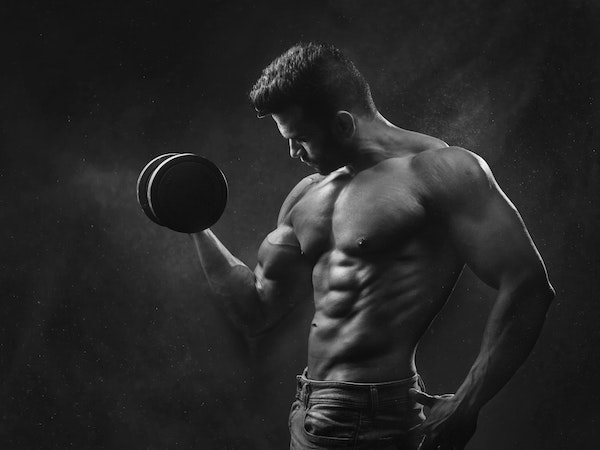
The best exercises for working and developing your obliques are:
- Side planks
- Farmer walks
- T-rotation
- Bear crunches
- Hanging leg raises with a twist
Wrapping Up
So what have we learned?
It’s not really worth worrying about 4 packs vs 6 packs vs 8 packs, because it’s completely out of your control.
The number of “packs” you have has nothing to do with your diet and training, and everything to do with your genetic.
So you can thank or curse mom and dad for whatever you’ve been blessed with.
The ab muscles we talk about in terms of 6 packs are really just two muscles, called the rectus abdominis, that run parallel to each other down the front of your abdomen. Little ridges of connective tissue run across these muscles, forming distinct sections that give the appearance of a 4 pack or 6 pack or what have you.
This is entirely out of your hands!
What you can do is maximize what you’ve got.
For a great set of abs (no matter how many), you’ll want to:
- Be very lean (10% bodyfat or lower for men)
- Have strong, thick core muscles
- Develop your obliques
And that’s pretty much it! The rest will fall into place.
I hope this helps, friends!